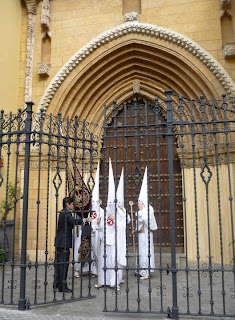When in Coruña, I met two other Forenex vets, Lais and Bryan. Both had met the summer before at the grandaddy of all FNX camps: Uclés, a real summer camp. The kind with friendship bracelets and roughing it. Not like Coruña camps, with their sailing classes and shopping trips. I decided I wanted to give Uclés a try in order to pay homage to my camp days as a kid.
I got that experience and much more.
Among the craziest things that happened was trying to find a lost student in an enormous monastery (he snuck back to bed), punishing bullies and snotty teenagers, invading the only bar in the entire town and a gigantic botellón known as the fiesta municipal. Then there was making a few kids cry just by being the boss, a teacher missing the train back from Madrid and me scrambling to figure out how to cover her classes, asthma attacks, bedbugs and the occasional creepy occurrence and bat infestation.
This summer has certainly been a bit crazy, but nothing like my two weeks in Uclés!







